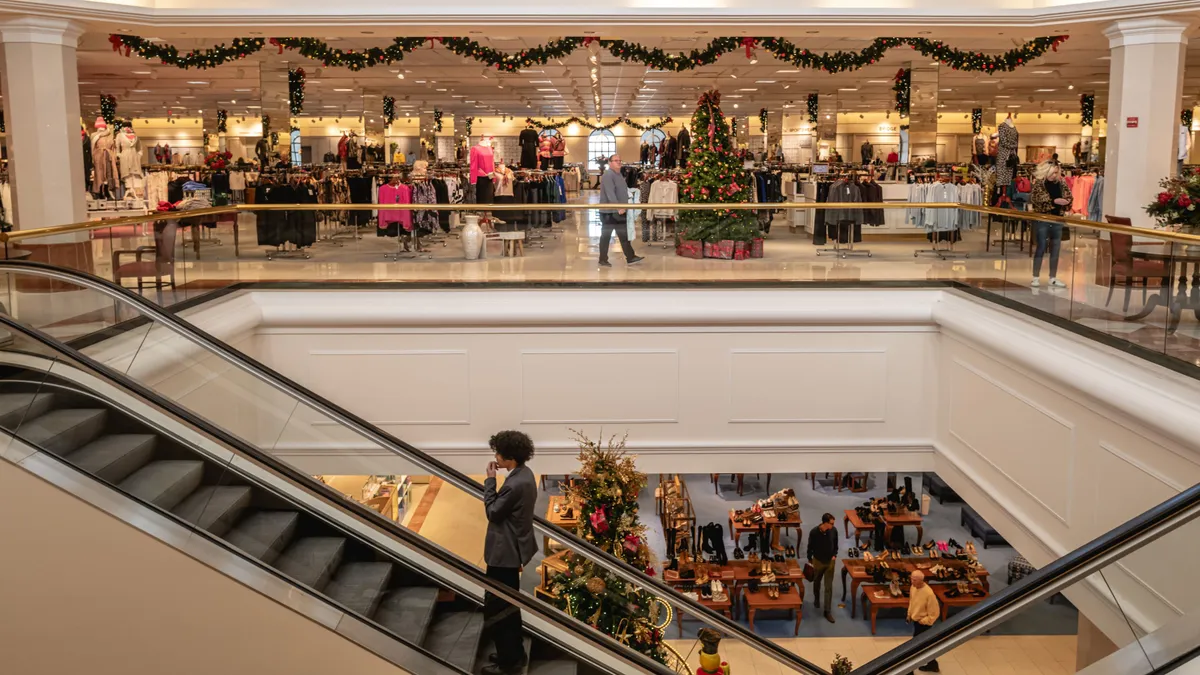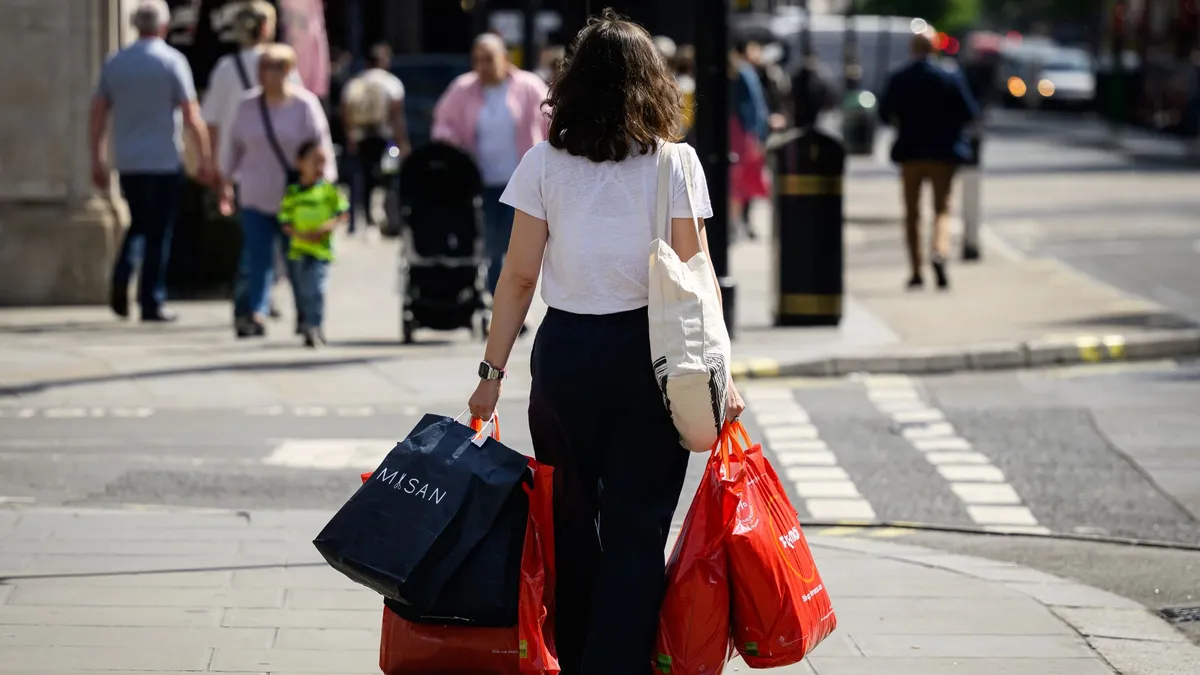Dive Brief:
- Concerned over lingering inflation and higher prices, U.S. consumers earning under $50,000 annually will spend 24% less on holiday items this year, while higher earners (over $150,000) will spend 26% more, according to an October holiday report from JLL that surveyed over 1,000 customers.
- Average holiday budgets will drop 10.2% to $1,133 from $1,261 per person, but gift budgets will remain virtually unchanged from 2024. Food, decor and entertainment budgets are being cut back to allow for gift purchasing, per the report.
- With their everyday emphasis on value, mass merchandisers have returned as the most popular shopping destination for over 62% of shoppers compared with 46% a year ago. Department stores, at 50.4%, are less popular than last year when 58% of shoppers listed them as their top holiday destination.
Dive Insight:
The growing disparity between high- and low-wage earners is having a disproportionate effect on how consumers approach shopping during the holidays.
“The polarity of consumer sentiment and spend is an ongoing result of income disparity and buying power in the U.S. today,” Naveen Jaggi, president of retail advisory services at JLL, said in an email. “The top 20% of households drive 60-70% of consumer spending, while the bottom 80% account for just 30% ... Meanwhile, about 50% of earners have no stock market exposure, so they’re missing the wealth gains driving spending among higher-income households. This creates a widening divide between the ‘haves and have-nots.’”
A majority of consumers expect prices to be higher this year, which may play a part in them being driven to shop for deals and discounts during October promotional events at Amazon, Walmart and Target.
While 84% of shoppers will order holiday items online for home delivery, just 16% will use e-commerce exclusively, according to the JLL survey. Nearly three-quarters of shoppers said they would use multiple retail channels to make holiday purchases.
Social media plays a major role in how consumers shop for the holidays, with 79% saying they use several platforms for shopping inspiration. Gen Z consumers favor TikTok at 46% while millennials balance their shopping online searches between Facebook, Instagram and X. Meanwhile, 58% of baby boomers don’t use any social media for inspiration.
A recent report from Experian notes that 27% of consumers expect to spend less this season, while just 22% will spend more. A PwC survey this month found that Gen Z shoppers plan to cut their spending on gifts by 30%, with millennials trimming their spending by 9%.














